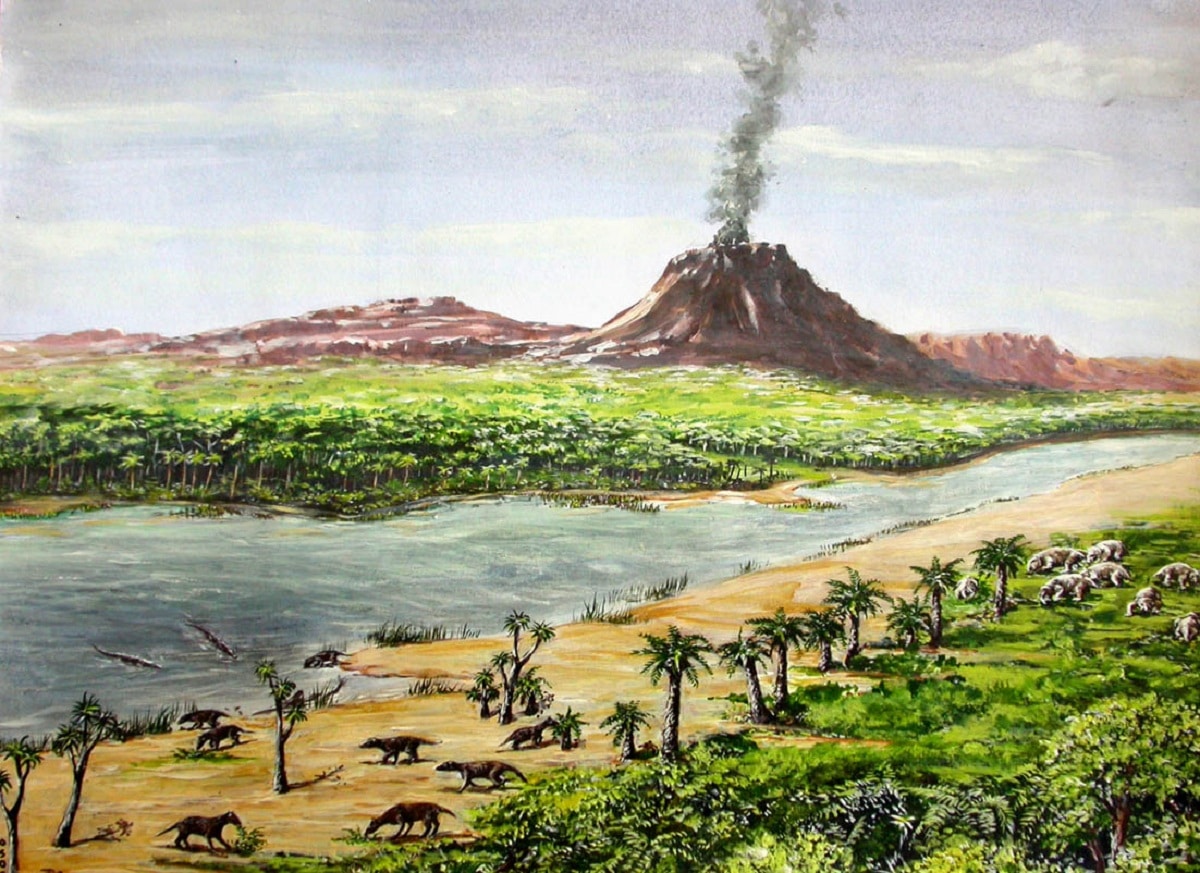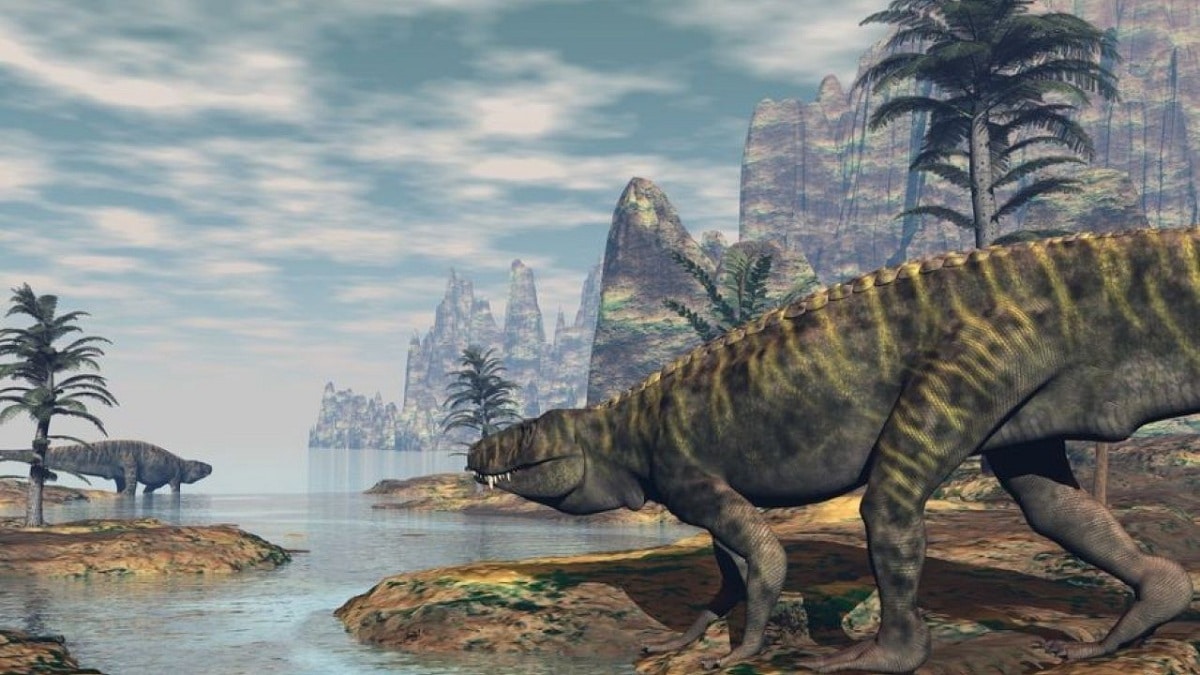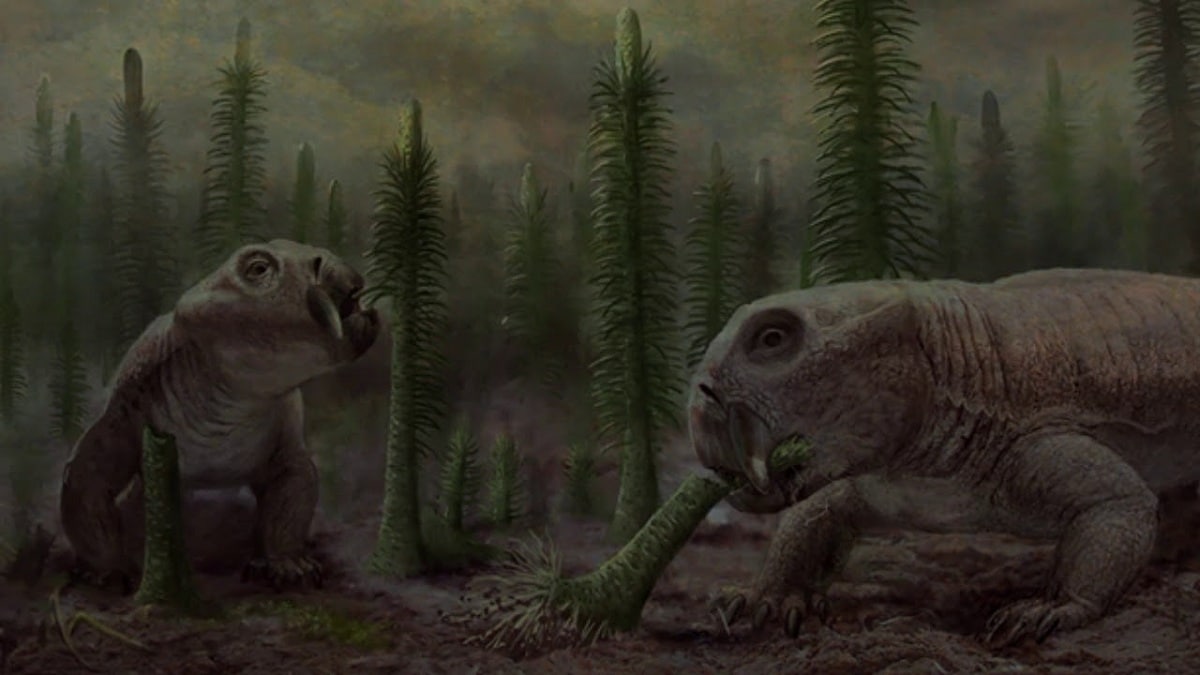
Within the era of Mesozoic There have been 3 periods that have marked differences in the evolution of our planet: Triassic, Jurassic y Cretaceous. On the dividing line that existed the pre-Triassic period, the Permian, a process of mass extinction took place on a planetary level that made 95% of all living species disappear. This made the Triassic fauna represent something of a reset in all life on the planet. The few species that managed to survive this process of mass extinction had to adapt to the new terrestrial and marine conditions.
Therefore, we are going to dedicate this article to tell you everything you need to know about Triassic fauna.
Development of the Triassic flora

Despite this process of mass extinction at the planetary level, there were numerous species that were able to adapt to new forms of life and, little by little, over time they were able to diversify. Throughout this period, plants formed large forests and it was the dinosaurs that began to dominate the planet. They were practically animals that dominated all existing habitats, both land, air and sea.
We are going to give a brief review of the development of the flora in this period. At the beginning of the Triassic, many plants became extinct since environmental conditions were not the most suitable for them to develop and diversify properly. This is why the plants that could be maintained after this extinction period could diversify quite easily since the degree of competition was much lower. The plants that could be maintained and diversified in great quantity were mainly those belonging to the group of gymnosperms.
These plants are known as bare-seeded plants. Within this group of plants, the conifers and cycads stand out. Representatives of the genus gingko and ferns were also quite relevant. Conifers represented the group of those plants with a woody, thick and fairly resistant workshop. Its leaves were evergreen and normally monoecious. This makes their organs, both male and female, when reproducing, exist in the same individual.
On the other hand, cycads were those plants with a woody stem that did not have any type of branching. Its leaves were located at the apical end of the plant and were dioecious. This means that there are separate male and female individuals. Gingko were quite abundant in this period and only the Gingko biloba species live today. Finally, ferns were the vascular plants that already belonged to the group of pteridophytes and that have phloem and xylem.
Development of the Triassic fauna

The most representative fauna of this period was made up of two groups: reptiles and dinosaurs. It was the invertebrates that were able to achieve greater development at the level of the aquatic ecosystem. Some species of reptiles also developed in marine environments and were able to dominate much of the seas.
As for the air, some reptiles began to be observed that had certain adaptations to the present environmental conditions and were able to fly. To do this, they needed various anatomical mutations to adapt their arms and limbs to flight.
We are going to develop in a deeper way all the fauna of the Triassic.
Terrestrial Triassic fauna
Within these ecosystems, several groups of animals with unique characteristics developed: mammalian reptiles and dinosaurs.
Mammalian reptiles
This group was known by the name of therapsids. In physical aspect we could see these animals were a hybrid between dog and lizard. Their limbs were quite long compared to the rest of the body but they had very short tails. The teeth had different types of shapes depending on the diet of each species. When the diet was mainly the viper, we can see that the teeth were mainly developed through morals. The molars are more practical to be able to crush the plants. However, if the diet was fully carnivorous, you could see a better development of the roads and the butcher's tooth.
Triassic dinosaurs
Dinosaurs are thought to have appeared throughout this period. Among the most representative dinosaurs we see the prosauropods and theropods. We will analyze them in detail.
Prosauropods
They were animals with great volume and that had a neck with great length. The length is not as great as the herbivores that lived during the Jurassic period. His forelimbs were less developed than his hindquarters. Within the prosauropods there were some divisions in terms of species. The predominant ones were the Mussaurus and the Sellosaurus.
Theropods
They were the other groups of dinosaurs that stood out during this stage. It was a group of carnivorous dinosaurs. Among its main characteristics we find a pipette gait and very poorly developed forelimbs. The size of these species was varied depending on the ecosystems where they will be found. As the evolution of animals preceded a mass extinction, genetic adaptations were taking place with greater speed. This is due to the fact that the environments were very changeable in those times and that the flora also had its own development.
Some species of theropods They did not exceed the meter while others were capable of reaching up to 12 meters. Some of the best known theropod species were the Tawa and the Euroraptor.
Aquatic Triassic fauna

In the aquatic environment, invertebrates developed mainly. They were represented by mollusks among which the gastropods, bivalves and cephalopods stand out. Some corals also developed on the seabed.
Aquatic reptiles also had quite a development at this time. Notosaurus has and ichthyosaurs stand out. With regard to aerial reptiles there was also a group of reptiles that developed quite well with respect to others. And it is that they could generate a type of membranes that extended from its trunk to its upper extremities. These limbs made him able to fly. In this group are the Pterosaurs that were oviparous and had an elongated beak. Their diet was carnivorous.
I hope that with this information you can learn more about the fauna of the Triassic.